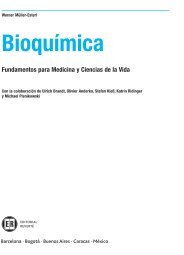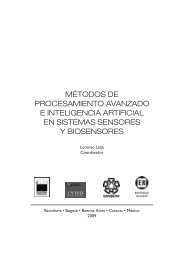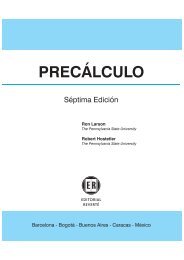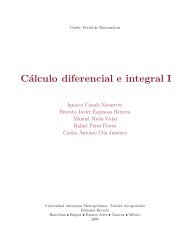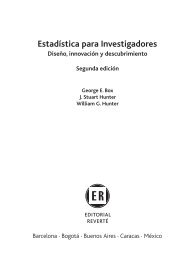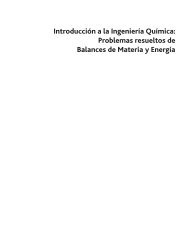Chapter 11 Gravity
Chapter 11 Gravity
Chapter 11 Gravity
You also want an ePaper? Increase the reach of your titles
YUMPU automatically turns print PDFs into web optimized ePapers that Google loves.
Use Kepler’s third law to relate the<br />
orbital period of an asteroid in the<br />
Kirkwood gap to its mean distance<br />
from the Sun:<br />
Dividing the second of these<br />
equations by the first and simplifying<br />
yields:<br />
Solving for rKirkwood yields:<br />
Because the period of the orbit of an<br />
asteroid in the Kirkwood gap is half<br />
that of Jupiter’s:<br />
T<br />
2<br />
Kirkwood<br />
T<br />
2<br />
Kirkwood<br />
2<br />
TJupiter<br />
2<br />
4π<br />
=<br />
GM<br />
Sun<br />
2<br />
4π<br />
GM<br />
=<br />
4π<br />
GM<br />
Sun<br />
2<br />
r<br />
Sun<br />
3<br />
Kirkwood<br />
r<br />
3<br />
Kirkwood<br />
r<br />
3<br />
Jupiter<br />
<strong>Gravity</strong><br />
r<br />
=<br />
2 3<br />
Kirkwood<br />
Kirkwood Jupiter ⎟<br />
Jupiter<br />
⎟<br />
⎛ ⎞<br />
⎜<br />
T<br />
= r<br />
⎜ T<br />
r<br />
Kirkwood<br />
=<br />
=<br />
⎝<br />
10 ( 77.<br />
8×<br />
10 m)<br />
4.<br />
90×<br />
10<br />
<strong>11</strong><br />
⎠<br />
⎛ 1<br />
2 T<br />
⎜<br />
⎝ T<br />
m<br />
3<br />
Kirkwood<br />
3<br />
rJupiter<br />
Jupiter<br />
Jupiter<br />
⎞<br />
⎟<br />
⎠<br />
<strong>11</strong> 1AU<br />
= 4.<br />
90×<br />
10 m×<br />
1.50×<br />
10<br />
= 3.<br />
27 AU<br />
Remarks: There are also significant Kirkwood gaps at 3:1, 5:2, and 7:3 and<br />
resonances at 2.5 AU, 2.82 AU, and 2.95 AU.<br />
29 •• Kepler determined distances in the Solar System from his data. For<br />
example, he found the relative distance from the Sun to Venus (as compared to<br />
the distance from the Sun to Earth) as follows. Because Venus’s orbit is closer to<br />
the Sun than is Earth’s orbit, Venus is a morning or evening star—its position in<br />
the sky is never very far from the Sun (Figure <strong>11</strong>-24). If we suppose the orbit of<br />
Venus is a perfect circle, then consider the relative orientation of Venus, Earth,<br />
and the Sun at maximum extension, that is when Venus is farthest from the Sun in<br />
the sky. (a) Under this condition, show that angle b in Figure <strong>11</strong>-24 is 90º. (b) If<br />
the maximum elongation angle a between Venus and the Sun is 47º, what is the<br />
distance between Venus and the Sun in AU? (c) Use this result to estimate the<br />
length of a Venusian ″year.″<br />
Picture the Problem We can use a property of lines tangent to a circle and radii<br />
drawn to the point of contact to show that b = 90°. Once we’ve established that b<br />
is a right angle we can use the definition of the sine function to relate the distance<br />
from the Sun to Venus to the distance from the Sun to Earth.<br />
r<br />
2 3<br />
<strong>11</strong><br />
m<br />
225



